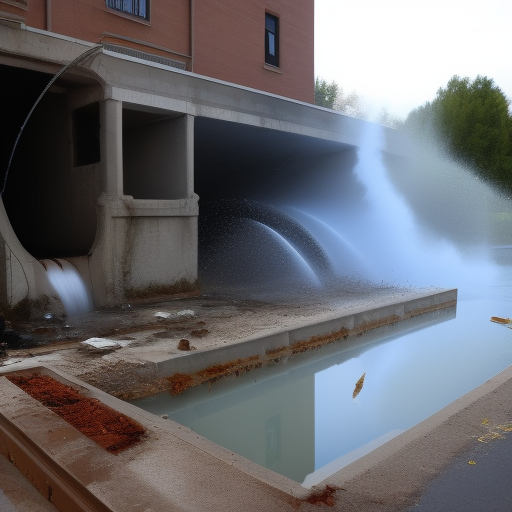
The scene unfolds with an eerie silence, an unsettling calm before the storm. There’s a faint drip, the sporadic pitter-patter of water droplets falling onto the ground, an ominous foreshadowing of what’s to come. The pipe, burdened by the weight of filth, creaks under the pressure, its rusty joints screaming in agony.
The surroundings, once masked by the stench of sewage, now hang heavy with anticipation. The air is thick with tension, as if the very atmosphere holds its breath, aware of the impending chaos about to be unleashed.
It starts as a mere crack, barely noticeable to the untrained eye. A small trickle of murky water escapes through the weakened seam, crawling its way down the side of the pipe. The sound of liquid splattering on the ground becomes more pronounced, growing in intensity with each passing moment.
The pipe shudders, as if writhing in pain, trying desperately to hold back the deluge. But the pressure within is relentless, unyielding, a force of nature demanding release. The crack widens, like a spider’s web extending its reach, fracturing the stability of the pipe’s aged infrastructure.
And then, it happens—the pipe succumbs to the overwhelming strain. A thunderous boom reverberates through the air, shaking the very ground beneath. The rupture tears open, unleashing a torrent of vile wastewater into the world.
Where did this happen, you ask? Sources say it happened at a Connecticut Curaleaf facility, a well-known cannabis producer and retailer. Which facility? The Grow/Production facility in Simsbury Connecticut.
The damage was already done. This happened some time last week. Sources included that the wastewater had allegedly seeped into some of the gummies. Gummy à la Escherichia coli anyone?


